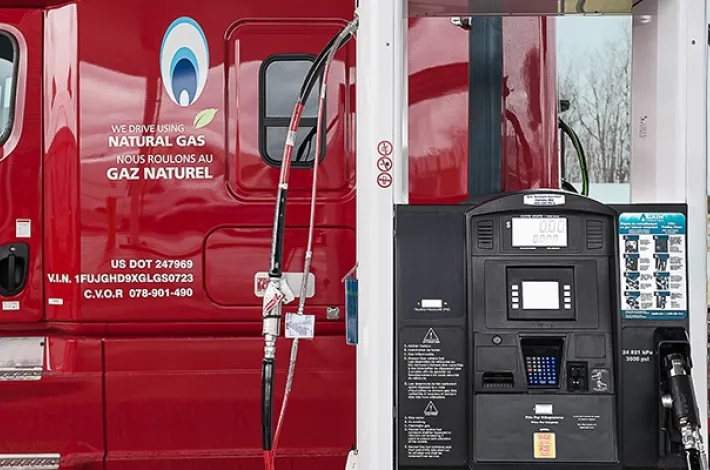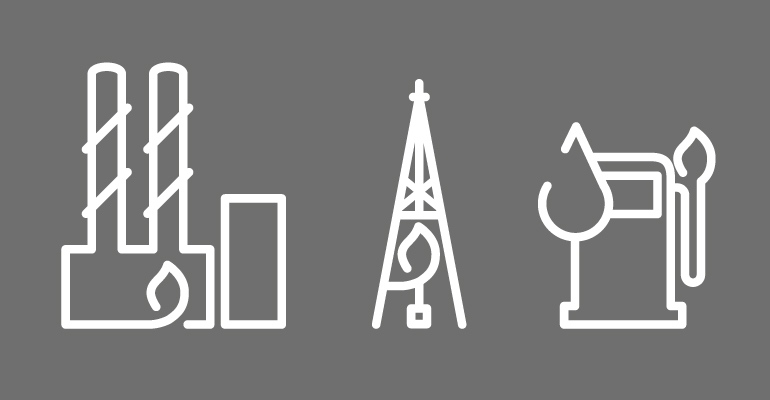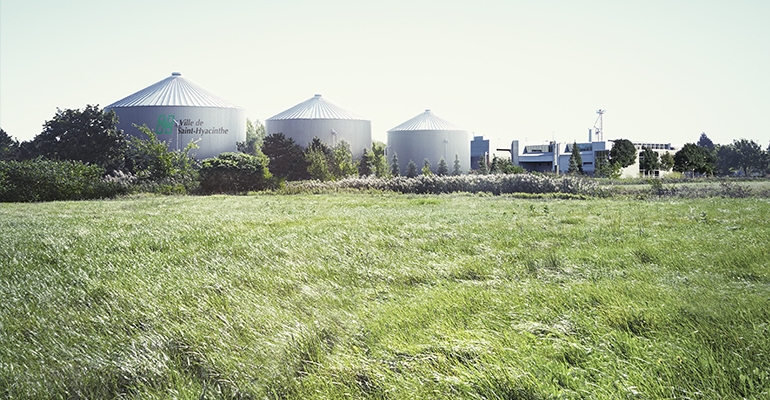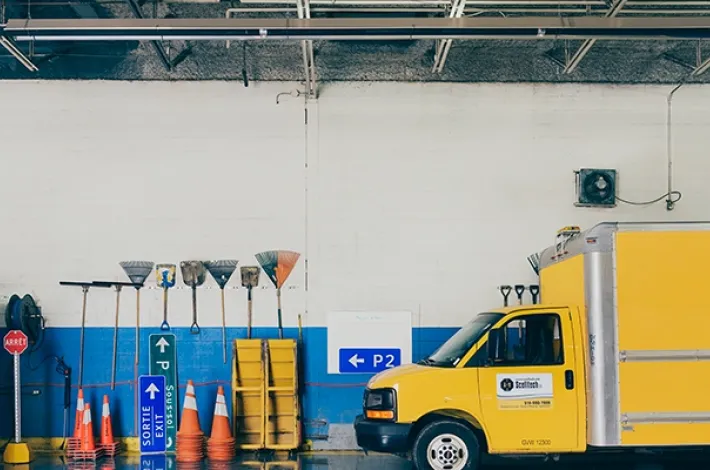
With renewable natural gas, nothing is lost, everything can be transformed
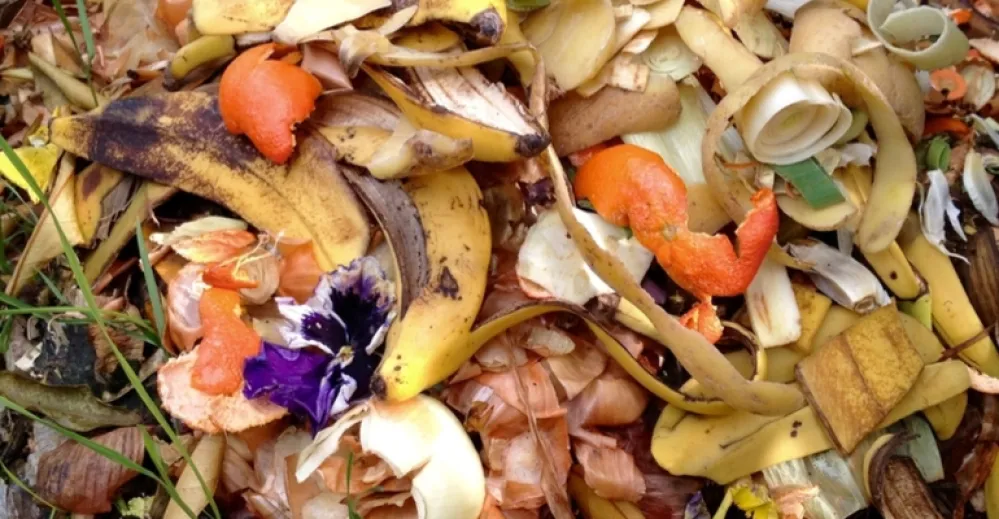
Use domestic waste to produce energy? Why not! This is the basic principle behind renewable natural gas (RNG) production. RNG is a carbon-neutral energy that is chemically similar to traditional natural gas but is generated from organic waste such as food waste, agricultural waste, sewage sludge, certain types of industrial waste, and even forest biomass.
The beauty is that, in addition to reducing landfill material and greenhouse gas (GHG) emissions, RNG has a host of other very interesting advantages. They are…
Closer, cleaner
In Québec, a number of biomethanization projects supported by Énergir (see sidebar below) have been realized or are in the process of being developed. By producing biomethane—a type of RNG—from food waste collected on their territories, municipalities and other local communities avail themselves of a local source of energy that will enable them to reduce their carbon footprint and their dependency on fossil fuels.
Moreover, this production favours the circular economy, a process that enables communities to reach full or partial energy self-sufficiency. Specifically, citizens’ organic waste is recycled or recovered and subsequently transformed into energy that can be:
- reinjected into Énergir’s gas network, thereby generating profits;
- used to heat buildings and fuel heavy vehicles.
Everyone wins
The RNG added to its gas network also gives Énergir an alternative energy that it can offer its customers, who, in turn can reduce their own carbon footprint. In this way, Énergir is contributing to the fight against GHGs and the achievement of the targets set out in Québec’s 2030 Energy Policy.
A force of nature
Abundant in Québec, forest biomass (e.g. sawdust and wood chips, bark, crowns, branches, wood shavings) represents an equally promising vein for RNG production. Since 2016, Énergir, in partnership with G4 Insights and other organizations, has been testing the potential of a new process called “pyrocatalytic hydrogenation.” This process results in a form of RNG that can be injected directly into the gas network.
Ultimately, RNG from forest waste could be an excellent complement to biomethane production and thus help foster a more energy-efficient future for Québec.
Want to learn more about biomethane? Test your knowledge by taking this quiz
Biomethane 101
Left to decompose on its own, organic matter such as food waste naturally produces biogas. Biomethanization is a process that consists in capturing this gas in biodigesters—immense vats that digest organic matter and resemble a giant stomach. The resulting biogas is then refined (cleaned of its impurities) into a natural gas that comes from a renewable source, hence the term “biomethane.” In this form, it is ready to be injected into the gas network in order to heat buildings or fuel trucks.
You may also like...

